- Home
- Photography
- Lenses
- Prime-lens-vs-zoom-lens
Prime Lens vs Zoom Lens - A Guide to Choosing Your Approach
I still remember the frustration of my first serious wildlife trip. I had a new camera, a fancy zoom lens, and a burning desire to capture everything I saw at a local wetland reserve.
I spent the day chasing after every flicker of movement. I zoomed in on a distant duck, zoomed out for a swan flying overhead, and frantically tried to track a dragonfly.
At the end of the day, my memory card was full of blurry, poorly composed, and soulless images. I had completely failed to capture the magic of the place.
That failure taught me an important lesson. The choice between a prime lens and a zoom lens isn't about which is better. It's about deciding what kind of photographer you want to be in that moment. It changes your entire approach to taking a photo.
The Generalist vs. The Specialist
The mistake I made was using a versatile tool in a chaotic way.
A zoom lens (like a 100-500mm) is a generalist, a brilliant multi-tool. It gives you a whole range of views, from wide to super-telephoto, just by twisting a ring. It offers you the freedom to react and solve problems, which is essential when nature is unpredictable.
A prime lens (like a 50mm or a 600mm) is a specialist. It has one single, fixed view of the world. To change the framing, you have to physically move. It feels limiting at first, but that limitation is its greatest strength. It forces you to be deliberate.
The Freedom (and Frustration) of a Zoom Lens
For years, I believed that to be a real photographer, I had to use a prime lens. But that's just ego. Some days, a zoom is the best tool for the job.
I think of my 100-400mm zoom as my storytelling lens. It’s for days when I don’t know what I’ll find.
I remember one December morning, spotting two redwings across a field in a tree bursting with berries. I couldn't get closer. Zooming out any further would have made the birds insignificant in the frame. A longer prime lens, like a 600mm, would have filled the frame with a single bird but lost the incredible story of the winter feast.
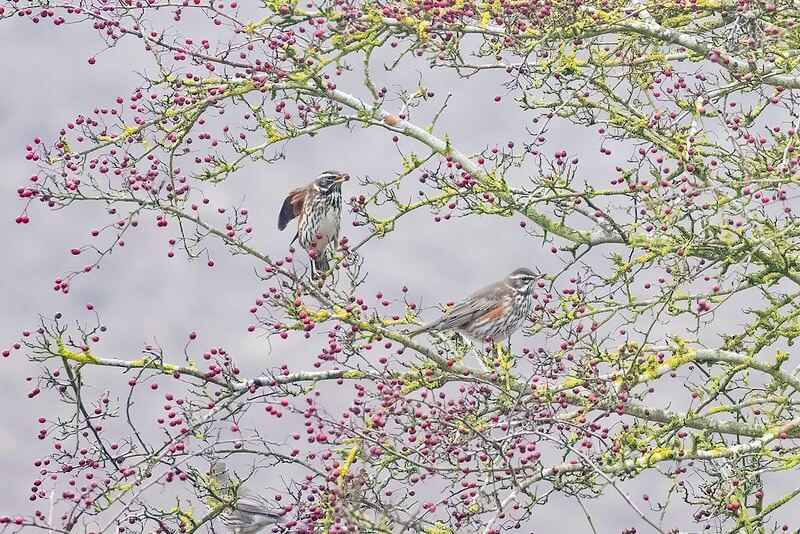
My best option was to zoom my 100-400mm lens in as far as it would go and take the shot. It wasn't a tight portrait, but it was the right story. In that moment, the zoom was a problem-solver.
Compare that with another time, when a blue tit landed on a branch just a few metres away. Here, the zoom offered a different kind of power: creative choice. I could have zoomed out to capture the whole bird and its surroundings. Instead, I chose to zoom in tight, filling the frame with its portrait and revealing the delicate detail of individual feathers.
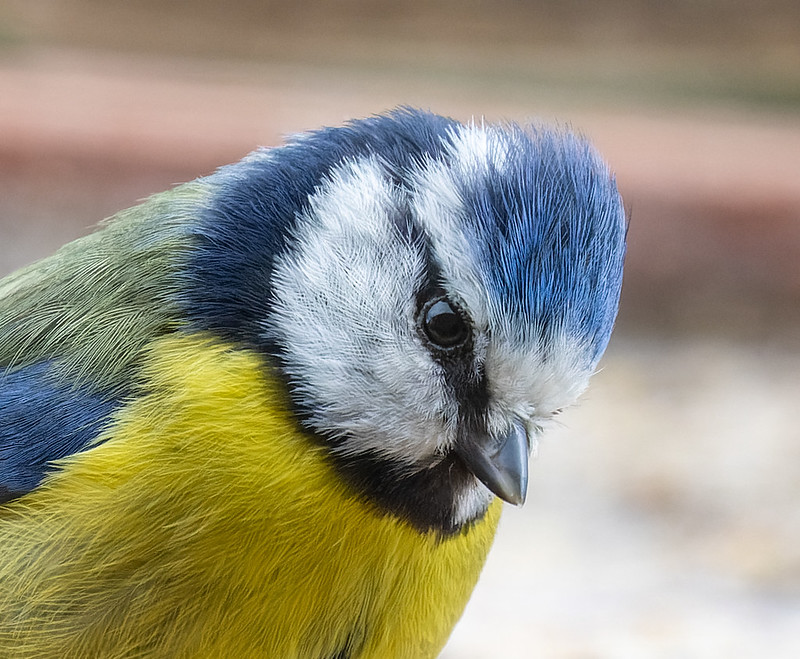
This is the true gift of the zoom lens. It acts as both a problem-solver when you have no choice, and a creative tool when you have all the choices in the world. It lets you decide exactly what story to tell.
The emotional payoff is the thrill of capturing any fleeting moment, whether it's a distant scene you barely reached or a tiny detail you chose to celebrate.
But while the zoom gives you the freedom of infinite choice, sometimes that freedom can be its own challenge.
There is a quiet power in simplicity, in using a tool that forces you to slow down, be patient, and see the world in just one specific way.
The Gift (and Heartbreak) of a Prime Lens
My 600mm prime lens taught me how to be a better wildlife photographer.
Now, when you hear 600mm prime lens, you might picture something the size of a cannon that costs more than a used car. And usually, you'd be right.
But Canon created a clever, lightweight, affordable version with a unique trade-off: it has a fixed f/11 aperture. In simple terms, this means the lens can’t let in a lot of light, so it really needs a bright, sunny day to perform its best.
This limitation forced me to be still. Because I can't zoom, my job is simply to find a good spot, get comfortable, and let the world come to me.
I remember a warm June afternoon by the River Nene. I'd found a promising spot and told myself, "Don't chase. Just watch this area."
For twenty minutes, nothing happened.
Then, a female Banded Demoiselle alighted on a single grass stem right where I was pointing the lens. Her green metallic body caught the sun, while the distant riverbank melted into a smooth, green wash behind her.
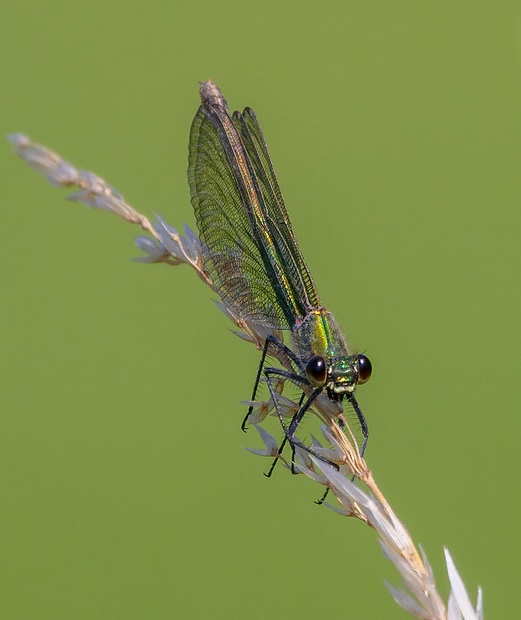
Who says you can't get soft backgrounds with an f/11 lens? You absolutely can, if the background is far enough away.
Because I was still and waiting, I could capture that tiny moment of perfection, a shot I would have missed if I'd been restlessly hunting for something bigger.
The feeling it delivers is a deep, quiet satisfaction. It’s the peace that comes from observation and the pride in creating a thoughtful image that reflects the patience you invested.
The Best Camera is the One You Have
This philosophy of choosing the right approach doesn't just apply to big lenses. It's about using the right tool for the moment.
I was at Summerleys Nature Reserve recently with only my 600mm prime lens, hoping to photograph distant birds. Suddenly, a brilliant rainbow appeared over the lake.
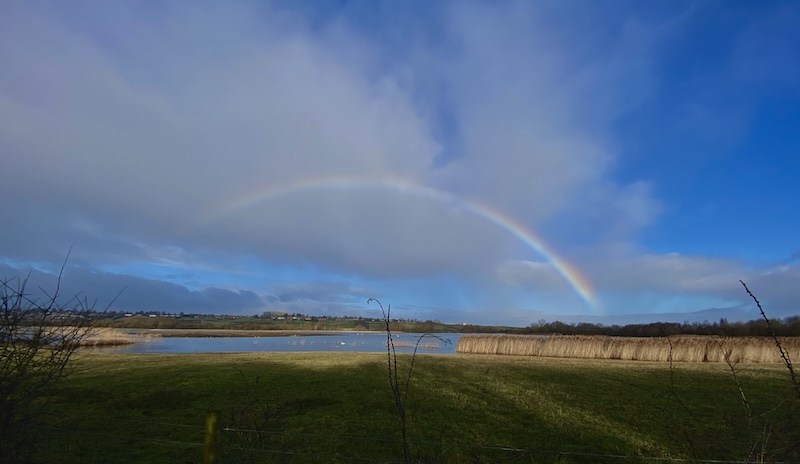
My powerful 600mm lens, designed to see a tiny piece of the world up close, was completely useless for capturing this vast, beautiful scene.
So, I reached into my pocket and pulled out my iPhone. In that second, it became the most important camera I owned. It was the ideal tool, effortlessly capturing the entire rainbow arcing over the water - a shot I would have otherwise missed completely.
Your phone is your ultimate sketchbook, perfect for capturing those unexpected moments of beauty. Your dedicated camera is for when you want to be more deliberate and focus on the craft. Neither is "better" than the other.
So, the next time you feel overwhelmed by gear, ask yourself that simple question:
Do I want the thrill of capturing the unpredictable, or the quiet satisfaction of patient observation?
Choosing your approach is the first step to creating photos you truly love. It replaces frustration with purpose and helps you find your own authentic way of seeing the world.
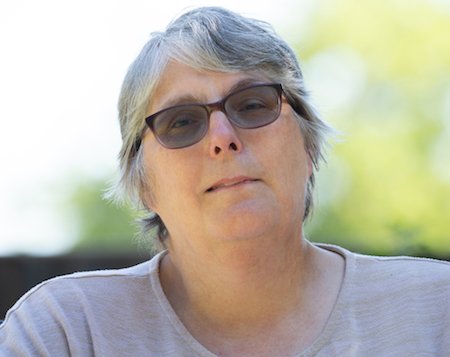
About the Author
For me, it’s never been just about bird names or camera settings, but the thrill of seeing a distant speck turn into a hunting kestrel.
After years of learning how to notice and photograph those moments, my camera has become the tool - and this site the field notebook - where I share what I’ve discovered.
If you’re ready to look a little closer, you’ll find the trips, lessons, and small wins that can help you see and photograph the wildlife right on your doorstep.
Step Behind the Wild Lens
If you’ve enjoyed your time here, you can also follow along by email.
I send the Wild Lens newsletter occasionally. It’s where I share:
- Fresh field notes and recent encounters
- The stories behind favourite photos
- Practical tips that don’t always make it onto the site
You’ll get new UK wildlife guides, photo tips, and ideas for your next walk, straight to your inbox.


